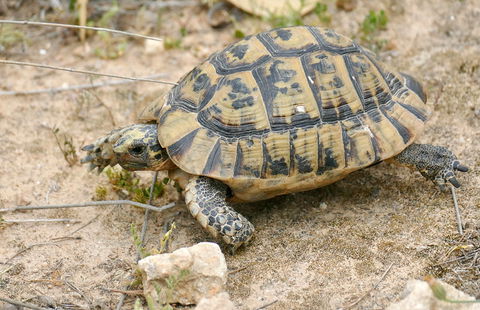Spring awakening The journey taken by Sierra Cabrera Tortoises Credit: Shuttlestock by Simon Whitfield
As spring approaches, the first turtles emerge from their hibernation.
Drivers need to be extra careful on local roads in order to protect the slow-moving lizards. When a tortoise crosses the road, it will not become disoriented if you help it cross the road safely in the direction that is intended. The best way to get it out of harm’s way is to gently lift it by placing your hands underneath its plastron.
These tortoises thrive in Sierra Cabrera‘s varied landscape thanks to its special climate. This area is located in the municipalities of Turre, Mojacar and has a combination of marine humidity and higher rainfall. It creates a lush ecosystem in an otherwise arid part of the province.
Protecting tortoises in motion: from hibernation and danger
The diverse ecosystem supports ancient cork, holm oak, and Mediterranean shrubs such as brooms, rockroses, rosemarys, and thymes. There are also a variety of fauna, including wild boars, foxes and the Greek tortoise, which is a protected species.
The Greek tortoise, also known as the spur-thighed tortoise, is native to parts of southeastern Spain, including regions like Doñana National Park and areas extending from northern Almeria to southern Murcia. Greek tortoise population remains threatened despite over 20 years of legal protection. The threats they face continue to be habitat fragmentation and illegal collection as well as competition from invasive weeds.
Read more Costa de Almería news, articles, and events here.
Want to get all the local news at one place? You can access all of our weekly online newspapers by clicking here.
 Costa News Spain Breaking News | English News in Spain.
Costa News Spain Breaking News | English News in Spain.




